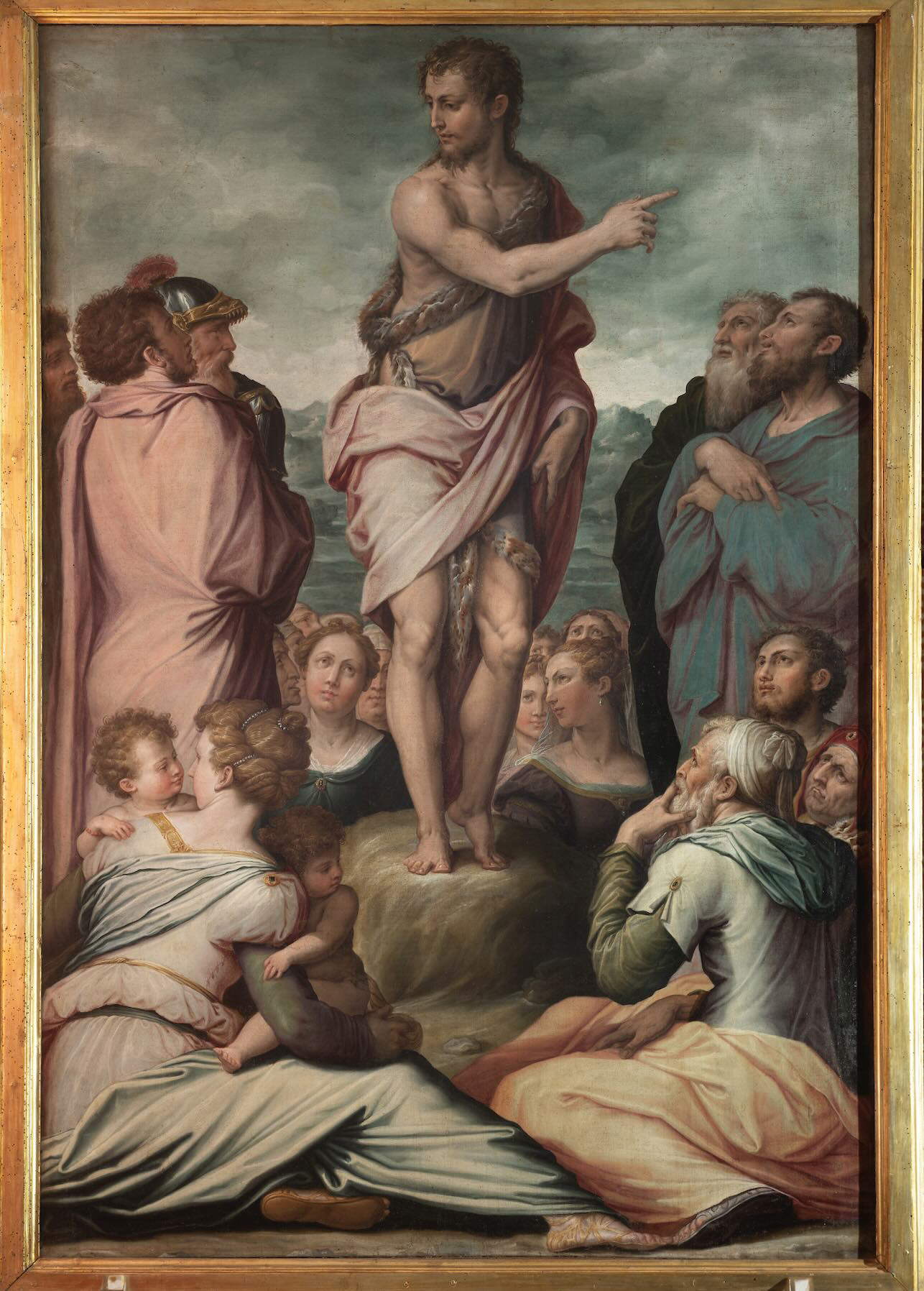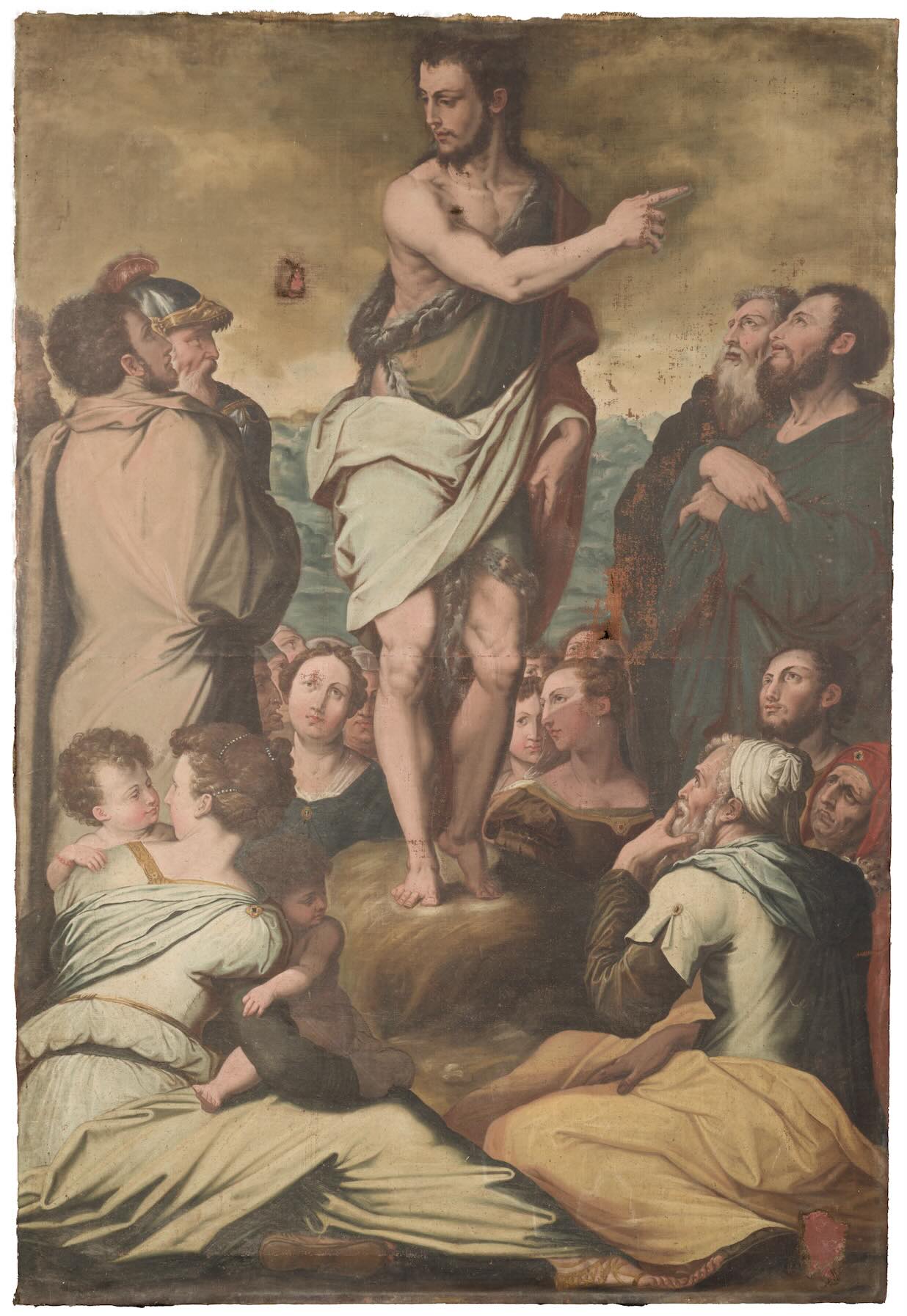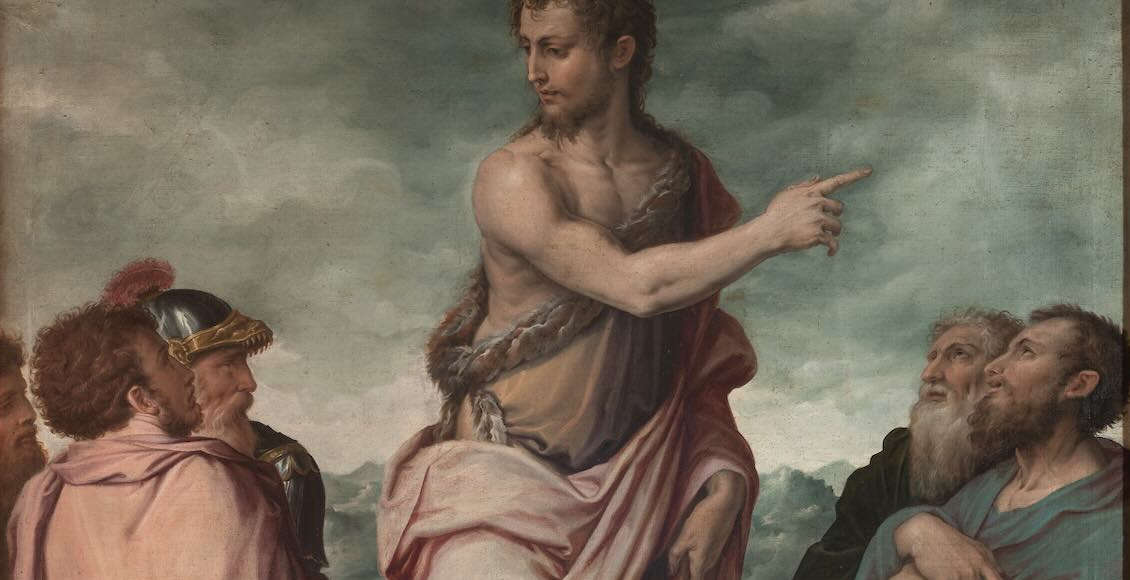Arezzo, exhibition focus on Giorgio Vasari's Stendardo dei Peducci
From October 11 to February 2, 2005, the Diocesan Museum of Sacred Art in Arezzo is hosting a dossier exhibition featuring Giorgio Vasari (Arezzo, 1511 - Florence, 1574). It is entitled "Si è mangiato altro che pane e messer Giorgio. Critical Fortune and New Research on the Peducci Standard, and is curated by Serena Nocentini: the focus of the exhibition is the processional standard painted by Giorgio Vasari in 1549 for the Compagnia di San Giovanni Battista dei Peducci. The banner, composed of two canvases depicting The Preaching of the Baptist and The Baptism of Jesus, will be displayed together with a second banner, coeval and from the Abbey of Saints Flora and Lucilla. The latter was recently restored and will be displayed for the first time in comparison with the original in the Diocesan Museum.
The Peducci standard, also known thanks to Vasari’s account in his Autobiography, has enjoyed a wide critical fortune that also extends to the standard from the Abbey of Saints Flora and Lucilla. This second standard, coeval with the original, is composed of two canvases that in the past had been separated and made into independent paintings. One of these was recently rediscovered in the church’s storerooms. Similar to the Peducci Stendardo, this specimen has almost identical dimensions, subjects, and style, suggesting a close correlation between the two works. The opportunity to restore the abbey banner came during the initiative "Si è mangiato altro che pane e messer Giorgio," thanks to the support of the Guido d’Arezzo Foundation and Opera Laboratori. This restoration was supported by a campaign of non-invasive diagnostic investigations and archival research that allowed for a deeper understanding of the work.
The event is part of the project Arezzo. The City of Vasari, promoted by the City of Arezzo and the Fondazione CR Firenze, with the collaboration of local and national cultural institutions. The initiative aims to celebrate Giorgio Vasari on the 450th anniversary of his death by offering a series of exhibitions and cultural activities in his honor.
In parallel, on Saturday, Oct. 12, at 11 a.m. at the Palazzo Comunale, the exhibition “The best nientedimanco among all the woods used for sculpture is the linden tree.” Colors of the Joust, which will display two Golden Spears dedicated to Vasari. One of the lances, made in 2024 by Francesco Conti and Giovanni Frangi, recalls motifs from Vasari’s works such as The Allegory of the Immaculate Conception and The Firstfruits of the Earth are Offered to Saturn. The 2010 Lance, on the other hand, created by Conti from a sketch by Mauro Capitani, celebrates the three major arts Vasari discusses in his Lives: painting, sculpture and architecture.
Both exhibitions will be on view until Feb. 2, 2025, offering fans the opportunity to rediscover the artistic legacy of the great master from Arezzo.
“A ’premiere’ that contributes to embellishing the art itinerary that accompanies the major international exhibition dedicated to Giorgio Vasari and deepens his pictorial skills,” says Alessandro Ghinelli, mayor of Arezzo. “A further testimony to the richness and spread of his work in our territory, which is accompanied by the homage of the Joust, the soul and popular identity of the city, a confirmation of the widest participation in this year of celebrations.”


“The exhibition at the Diocesan Museum,” explains Lorenzo Cinatti, director of Fondazione Guido d’Arezzo, “marks the last step that will then lead to the Oct. 30 opening of the main exhibition the Theater of Virtues, in the Gallery of Modern Contemporary Art. It is now clearly visible the overall perspective that has guided this Vasarian year that will leave important traces for the future as well, if only because of the restoration work of important masterpieces that the Guido D’Arezzo foundation has specially financed and supported such as the painting ” the sermon of St. John the Baptist in the desert,“ which precisely we will have the pleasure of admiring on this occasion and in the years to come.”
“This Vasari anniversary is an important event for the city and the diocese, which, together with the 650 years since Petrarch’s death and the 720 since his birth, makes this 2024 a special year for Arezzo,” says Bishop Andrea Migliavacca of the Arezzo-Cortona-Sansepolcro diocese. “The exhibition helps us grasp the uniqueness of Vasari the painter, writer and architect. The works in the diocesan museum, as well as those in other churches, such as Camaldoli, makes us custodians of an important heritage. And with the attention to consider that one truly understands Vasari together with Cosimo I, just as it is possible to truly understand the Medici grand duke, only together with the great Vasari.”
“Vasari celebrations,” Serena Nocentini concludes, “are a great opportunity to learn about and enhance the works of our influential fellow citizen. An exhibition may not necessarily be just an exhibition project but can become a moment of research and comparison. The restoration of the two canvases in the Badia now makes it possible to grasp the distinctive features of the figures and to appreciate both their technical mastery and their finesse of execution. The refined, almost tactile rendering of the surfaces and details-which has re-emerged thanks to the excellent restoration conducted by Francesca Gattuso-along with the firm and luminous composition make us think that these two canvases, too, may have come out of Giorgio Vasari’s workshop. But as we said, this will be an opportunity to open the debate.”
 |
| Arezzo, exhibition focus on Giorgio Vasari's Stendardo dei Peducci |
Warning: the translation into English of the original Italian article was created using automatic tools. We undertake to review all articles, but we do not guarantee the total absence of inaccuracies in the translation due to the program. You can find the original by clicking on the ITA button. If you find any mistake,please contact us.




























